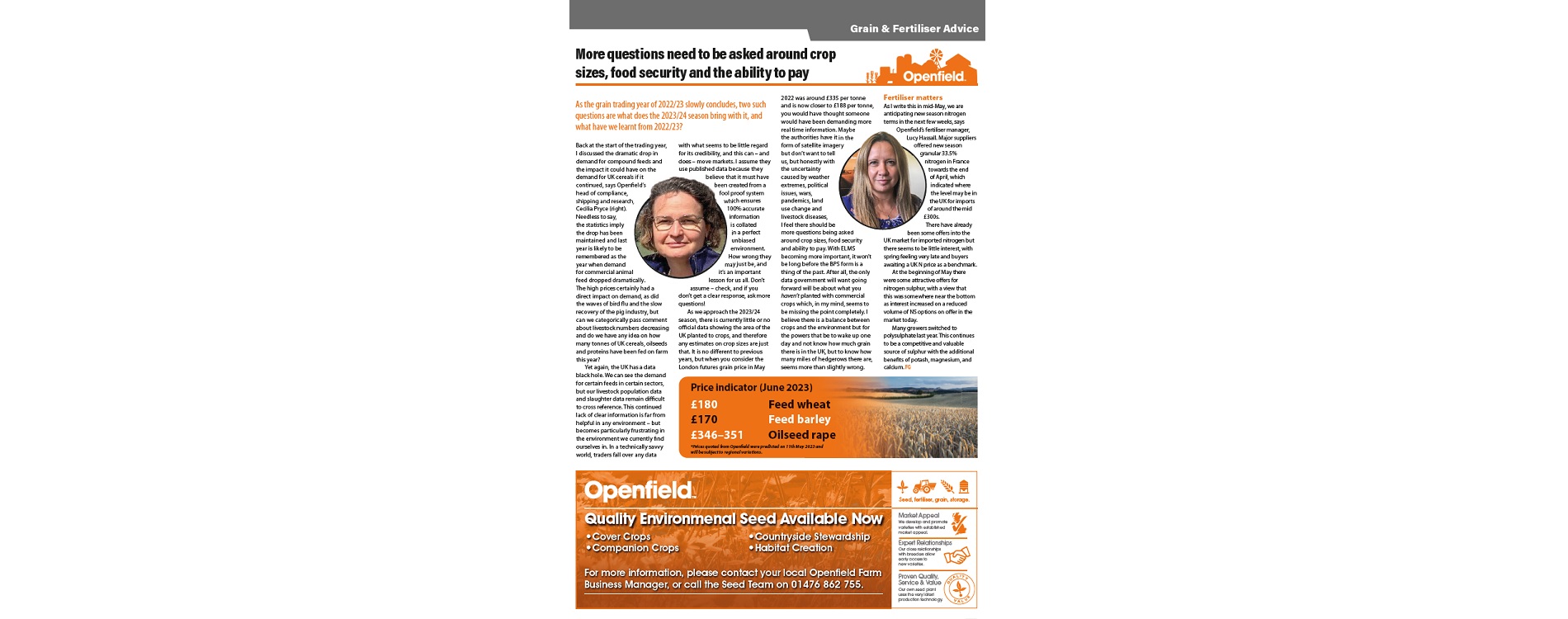More questions need to be asked around crop sizes, food security and the ability to pay
As the grain trading year of 2022/23 slowly concludes, two such questions are what does the 2023/24 season bring with it, and what have we learnt from 2022/23?
Back at the start of the trading year, I discussed the dramatic drop in demand for compound feeds and the impact it could have on the demand for UK cereals if it continued.
Needless to say, the statistics imply the drop has been maintained and last year is likely to be remembered as the year when demand for commercial animal feed dropped dramatically. The high prices certainly had a direct impact on demand, as did the waves of bird flu and the slow recovery of the pig industry, but can we categorically pass comment about livestock numbers decreasing
and do we have any idea on how many tonnes of UK cereals, oilseeds and proteins have been fed on farm this year?
Yet again, the UK has a data black hole. We can see the demand for certain feeds in certain sectors, but our livestock population data and slaughter data remain difficult to cross reference. This continued lack of clear information is far from helpful in any environment – but becomes particularly frustrating in the environment we currently find ourselves in. In a technically savvy world, traders fall over any data with what seems to be little regard for its credibility, and this can – and does – move markets. I assume they use published data because they believe that it must have been created from a fool proof system which ensures 100% accurate information is collated in a perfect unbiased environment.
How wrong they may just be, and it’s an important lesson for us all. Don’t assume – check, and if you don’t get a clear response, ask more questions! As we approach the 2023/24 season, there is currently little or no official data showing the area of the UK planted to crops, and therefore any estimates on crop sizes are just that. It is no different to previous years, but when you consider the London futures grain price in May 2022 was around £335 per tonne and is now closer to £188 per tonne, you would have thought someone would have been demanding more real time information. Maybe the authorities have it in the form of satellite imagery but don’t want to tell us, but honestly with the uncertainty caused by weather extremes, political issues, wars, pandemics, land use change and livestock diseases, I feel there should be more questions being asked around crop sizes, food security and ability to pay. With ELMS becoming more important, it won’t be long before the BPS form is a thing of the past. After all, the only data government will want going forward will be about what you haven’t planted with commercial crops which, in my mind, seems to be missing the point completely. I believe there is a balance between crops and the environment but for the powers that be to wake up one day and not know how much grain there is in the UK, but to know how many miles of hedgerows there are, seems more than slightly wrong.
Fertiliser matters
As I write this in mid-May, we are anticipating new season nitrogen terms in the next few weeks. Major suppliers offered new season granular 33.5% nitrogen in France towards the end of April, which indicated where the level may be in the UK for imports of around the mid £300s. There have already been some offers into the UK market for imported nitrogen but there seems to be little interest, with spring feeling very late and buyers awaiting a UK N price as a benchmark.
At the beginning of May there were some attractive offers for nitrogen sulphur, with a view that this was somewhere near the bottom as interest increased on a reduced volume of NS options on offer in the market today. Many growers switched to polysulphate last year. This continues to be a competitive and valuable source of sulphur with the additional benefits of potash, magnesium, and calcium.




